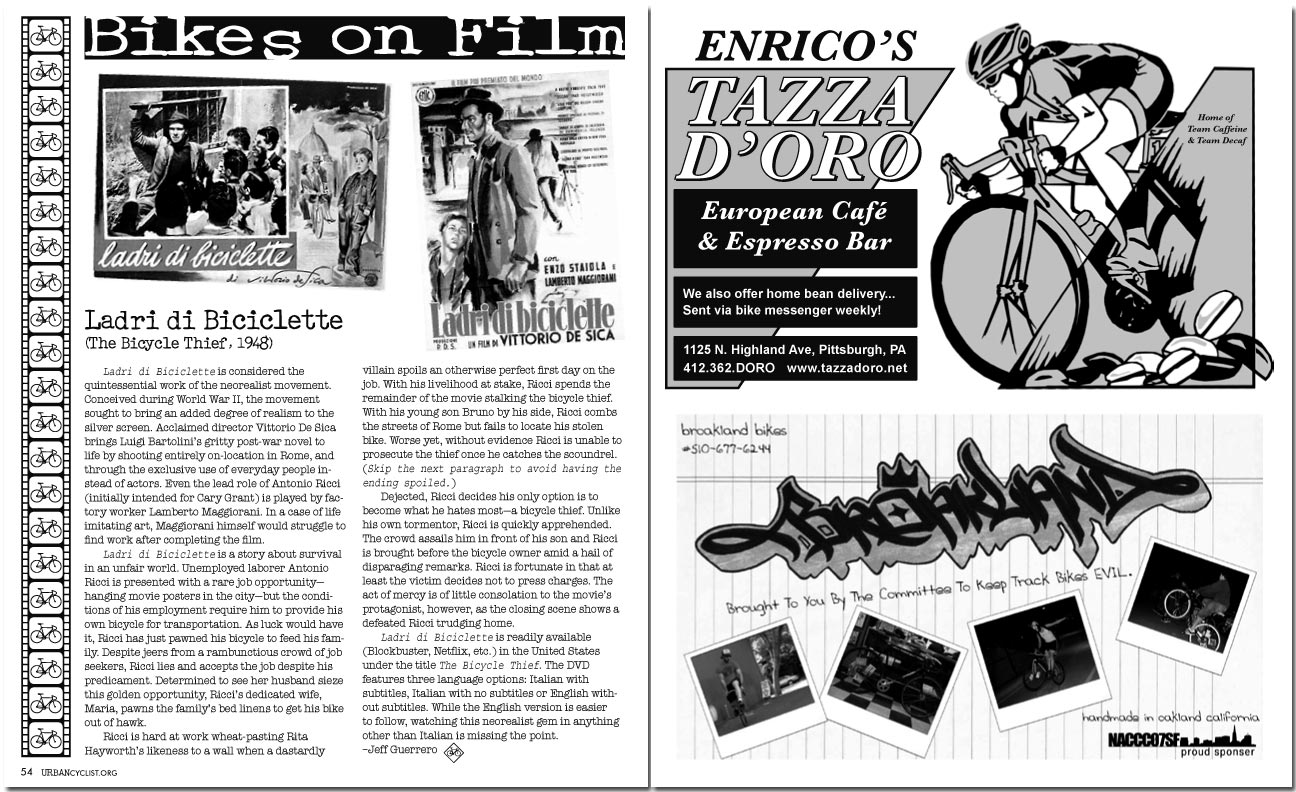
 |
Bikes on FilmBy Jeff Guerrero Ladri di Biciclette (The Bicycle Thief, 1948) Ladri di Biciclette is considered the quintessential work of the neorealist movement. Conceived during World War II, the movement sought to bring an added degree of realism to the silver screen. Acclaimed director Vittorio De Sica brings Luigi Bartolini’s gritty post-war novel to life by shooting entirely on-location in Rome, and through the exclusive use of everyday people instead of actors. Even the lead role of Antonio Ricci (initially intended for Cary Grant) is played by factory worker Lamberto Maggiorani. In a case of life imitating art, Maggiorani himself would struggle to find work after completing the film. Ladri di Biciclette is a story about survival in an unfair world. Unemployed laborer Antonio Ricci is presented with a rare job opportunity—hanging movie posters in the city—but the conditions of his employment require him to provide his own bicycle for transportation. As luck would have it, Ricci has just pawned his bicycle to feed his family. Despite jeers from a rambunctious crowd of job seekers, Ricci lies and accepts the job despite his predicament. Determined to see her husband sieze this golden opportunity, Ricci’s dedicated wife, Maria, pawns the family’s bed linens to get his bike out of hawk. Ricci is hard at work wheat-pasting Rita Hayworth’s likeness to a wall when a dastardly villain spoils an otherwise perfect first day on the job. With his livelihood at stake, Ricci spends the remainder of the movie stalking the bicycle thief. With his young son Bruno by his side, Ricci combs the streets of Rome but fails to locate his stolen bike. Worse yet, without evidence Ricci is unable to prosecute the thief once he catches the scoundrel. (Skip the next paragraph to avoid having the ending spoiled.) Dejected, Ricci decides his only option is to become what he hates most—a bicycle thief. Unlike his own tormentor, Ricci is quickly apprehended. The crowd assails him in front of his son and Ricci is brought before the bicycle owner amid a hail of disparaging remarks. Ricci is fortunate in that at least the victim decides not to press charges. The act of mercy is of little consolation to the movie’s protagonist, however, as the closing scene shows a defeated Ricci trudging home. Ladri di Biciclette is readily available (Blockbuster, Netflix, etc.) in the United States under the title The Bicycle Thief. The DVD features three language options: Italian with subtitles, Italian with no subtitles or English without subtitles. While the English version is easier to follow, watching this neorealist gem in anything other than Italian is missing the point. |